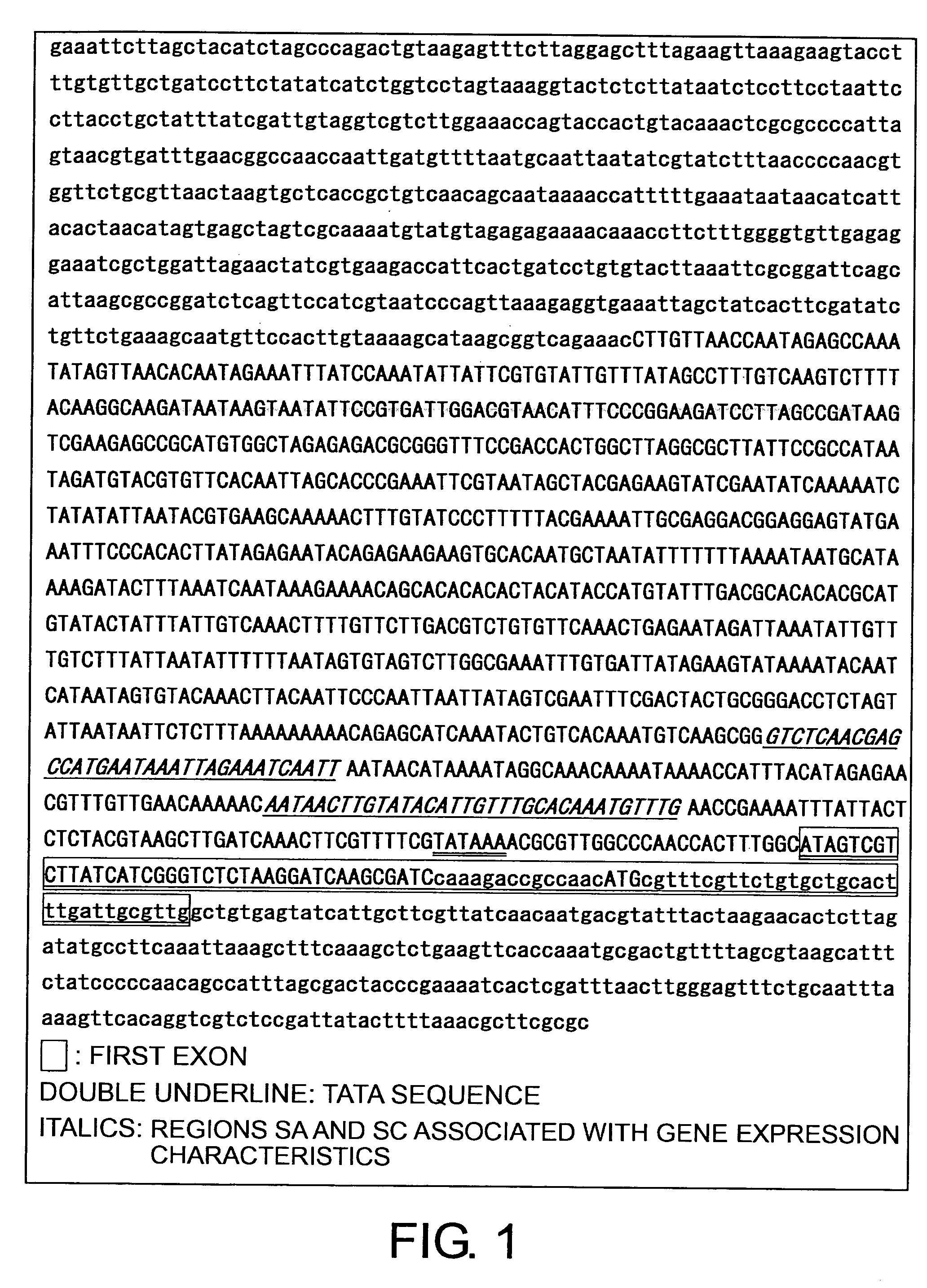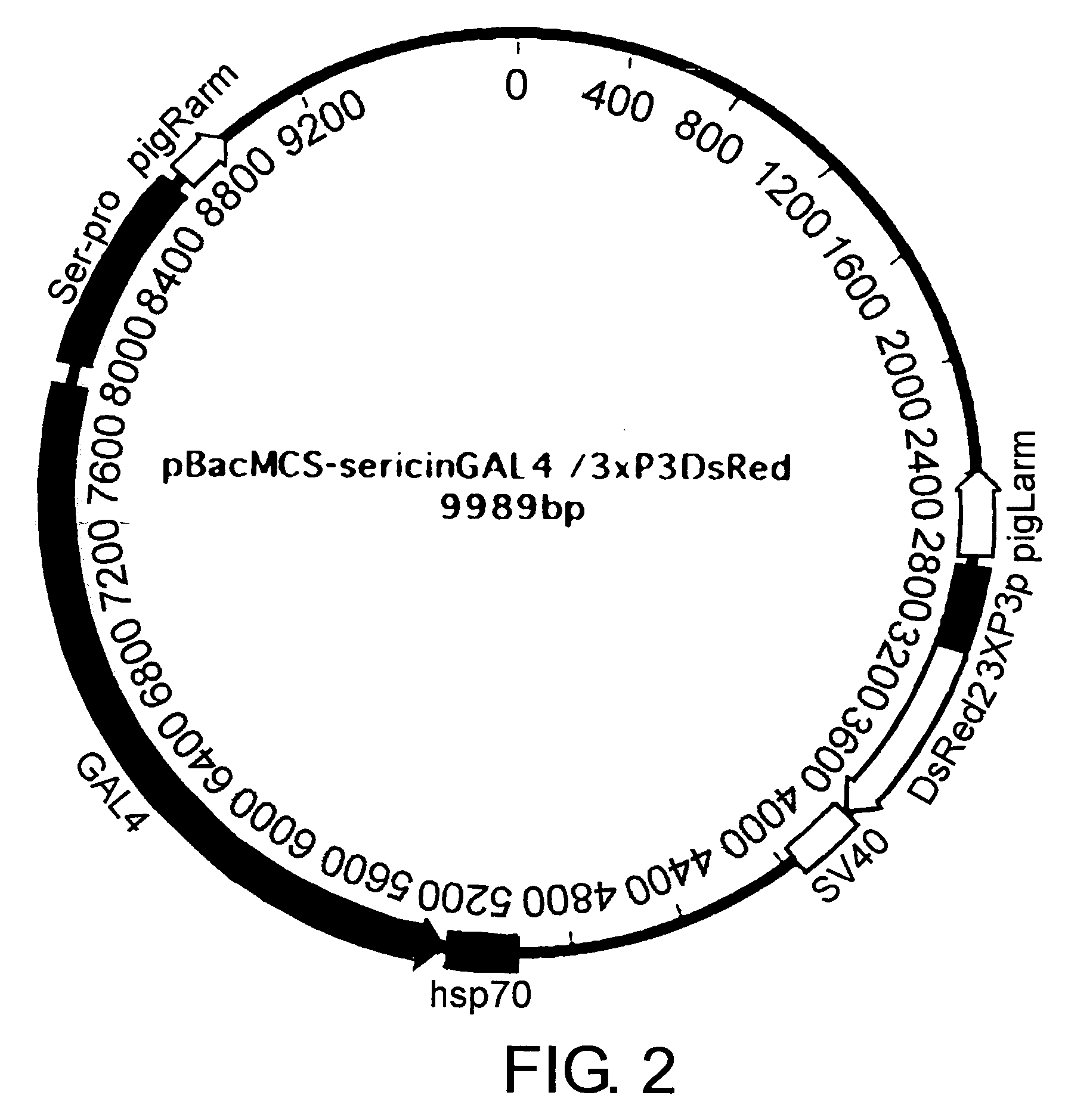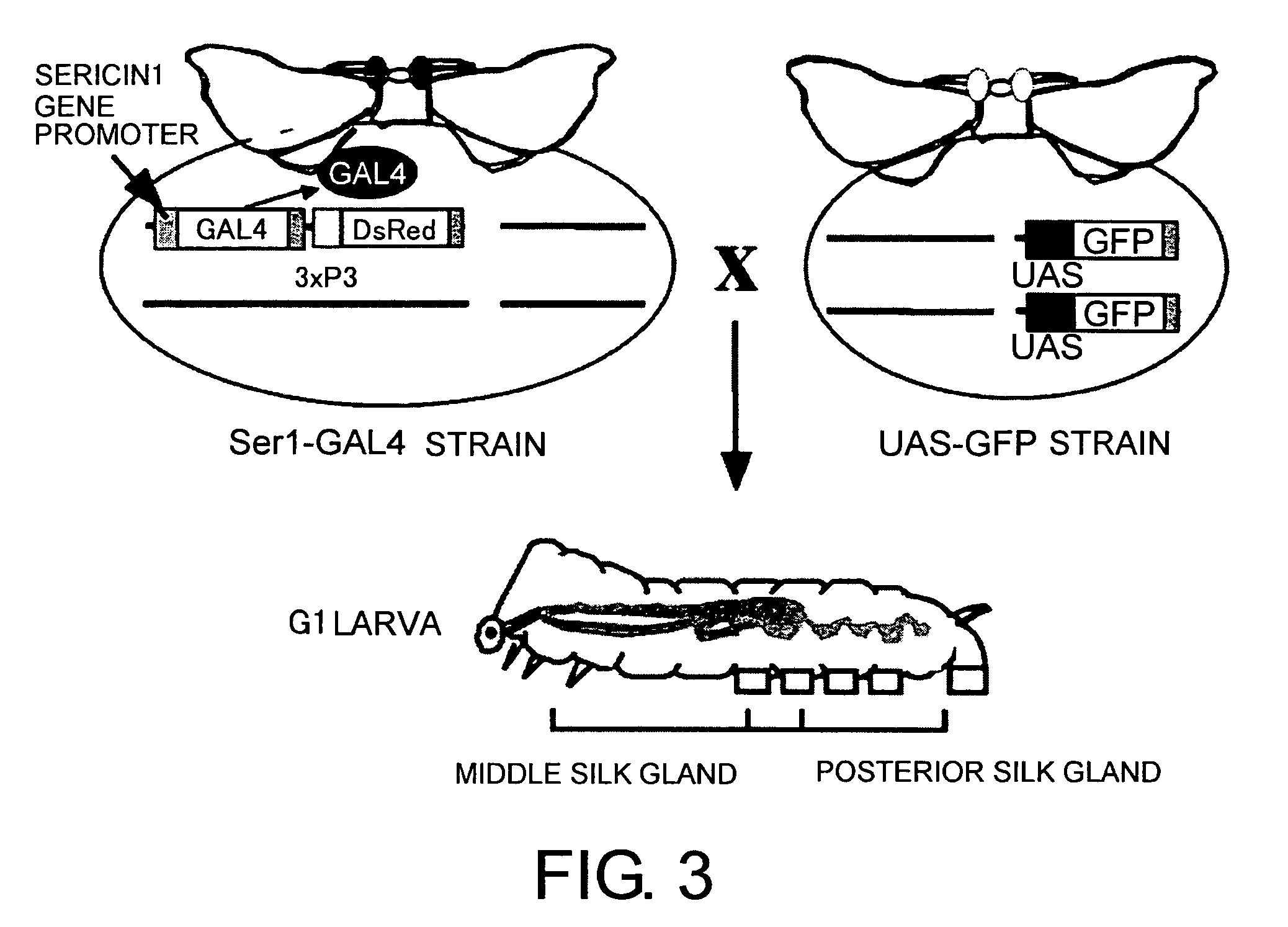Methods for producing proteins using silkworm middle silk gland-specific gene expression system
a gene expression and protein technology, applied in the field of protein production methods using the middle silkgland gene expression system, can solve the problems of high laborious purification procedure of this method and no previous successful examples of recombinant protein production from the middle silkgland
- Summary
- Abstract
- Description
- Claims
- Application Information
AI Technical Summary
Benefits of technology
Problems solved by technology
Method used
Image
Examples
example 1
1. Materials and Methods
[0105] Silkworms of the nondiapausing egg strain, w1-pnd, were used for producing transgenic silkworms. In a breeding room used exclusively for transgenic silkworms, the silkworms were reared on an artificial diet (Nosan Corporation) in a sealed Tupperware container. The promoter region of the sericin 1 gene was prepared by PCR from the genomic DNA of an overproducing strain. A region approximately 1-kb upstream of the sericin 1 gene was amplified by PCR (FIG. 1) and inserted into a plasmid as the promoter region. This plasmid was amplified using E. coli and then purified. After confirming the nucleotide sequence using an automated sequencer, the sequence was inserted upstream of the GAL4 gene. The resulting fused gene was then inserted into a plasmid vector for producing transgenic silkworms. Next, for the detection of recombinants, the 3XP3DsRed gene that is characteristically expressed in the eye was inserted into this vector (FIG. 2). Production of reco...
example 2
Expression and Characteristics of Recombinant Proteins in the Middle Silk Gland of the Sericin Mutant Nd-sD Silkworm Strain
[0108] In Example 1, a method was developed for expressing large amounts of the recombinant protein in the middle silk gland by introducing into silkworms a gene comprising the yeast GAL4 gene linked downstream of the sericin 1 gene promoter from the middle silk gland, and then crossing the silkworms with UASGFP silkworms carrying the green fluorescent protein gene as a reporter downstream of the GAL4 target sequence, UAS. In the above-described case, the protein synthesized in the middle silk gland was secreted into the lumen. In Example 2, such genes are introduced into the mutant Nd-sD strain, which secretes fibroin protein abnormally and only secretes sericin that is expressed in the middle silk gland, to produce a silkworm strain. Purification of GFP as a recombinant protein from the middle silk gland of the obtained silkworms was carried out to show that ...
PUM
| Property | Measurement | Unit |
|---|---|---|
| temperature | aaaaa | aaaaa |
| thickness | aaaaa | aaaaa |
| thickness | aaaaa | aaaaa |
Abstract
Description
Claims
Application Information
 Login to View More
Login to View More - R&D
- Intellectual Property
- Life Sciences
- Materials
- Tech Scout
- Unparalleled Data Quality
- Higher Quality Content
- 60% Fewer Hallucinations
Browse by: Latest US Patents, China's latest patents, Technical Efficacy Thesaurus, Application Domain, Technology Topic, Popular Technical Reports.
© 2025 PatSnap. All rights reserved.Legal|Privacy policy|Modern Slavery Act Transparency Statement|Sitemap|About US| Contact US: help@patsnap.com



